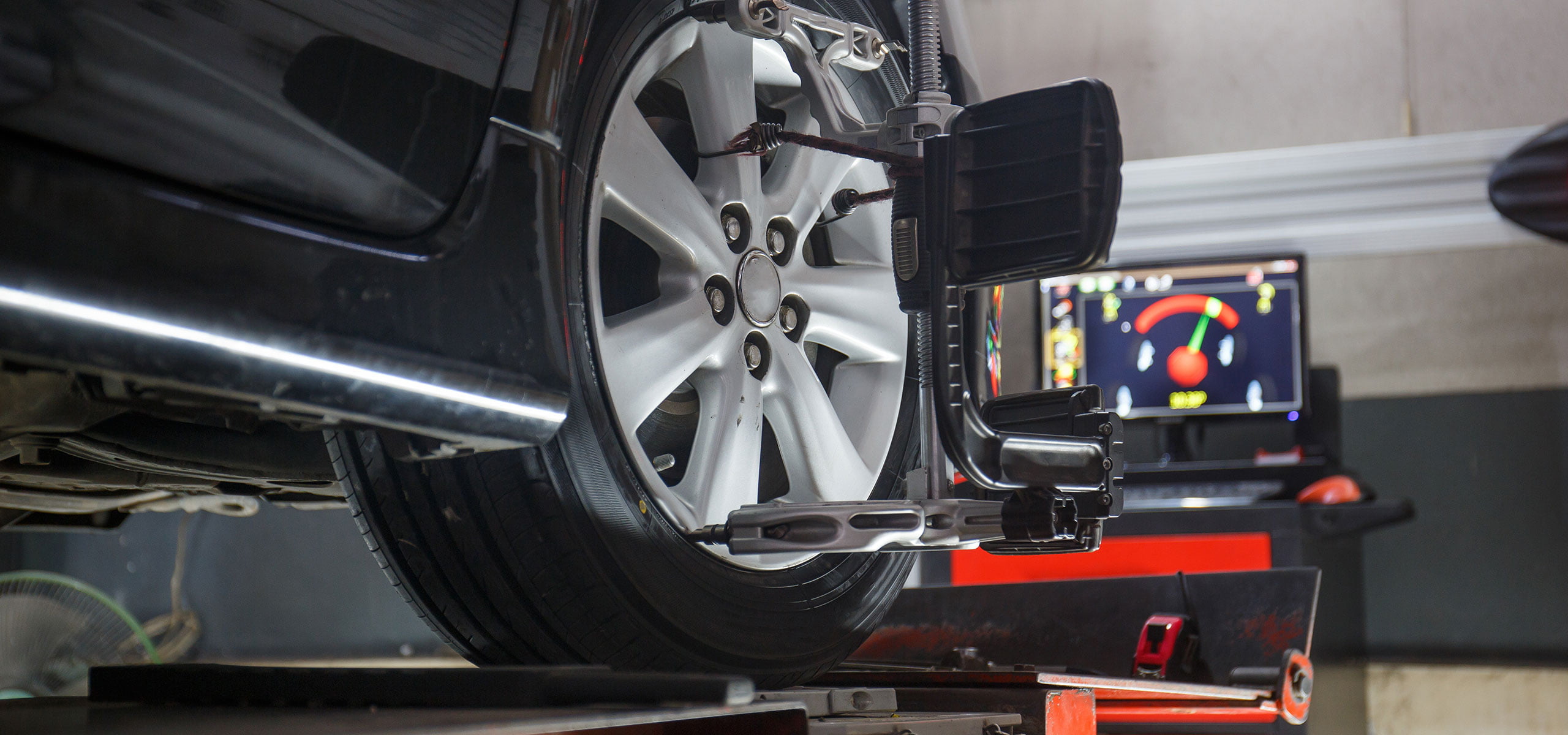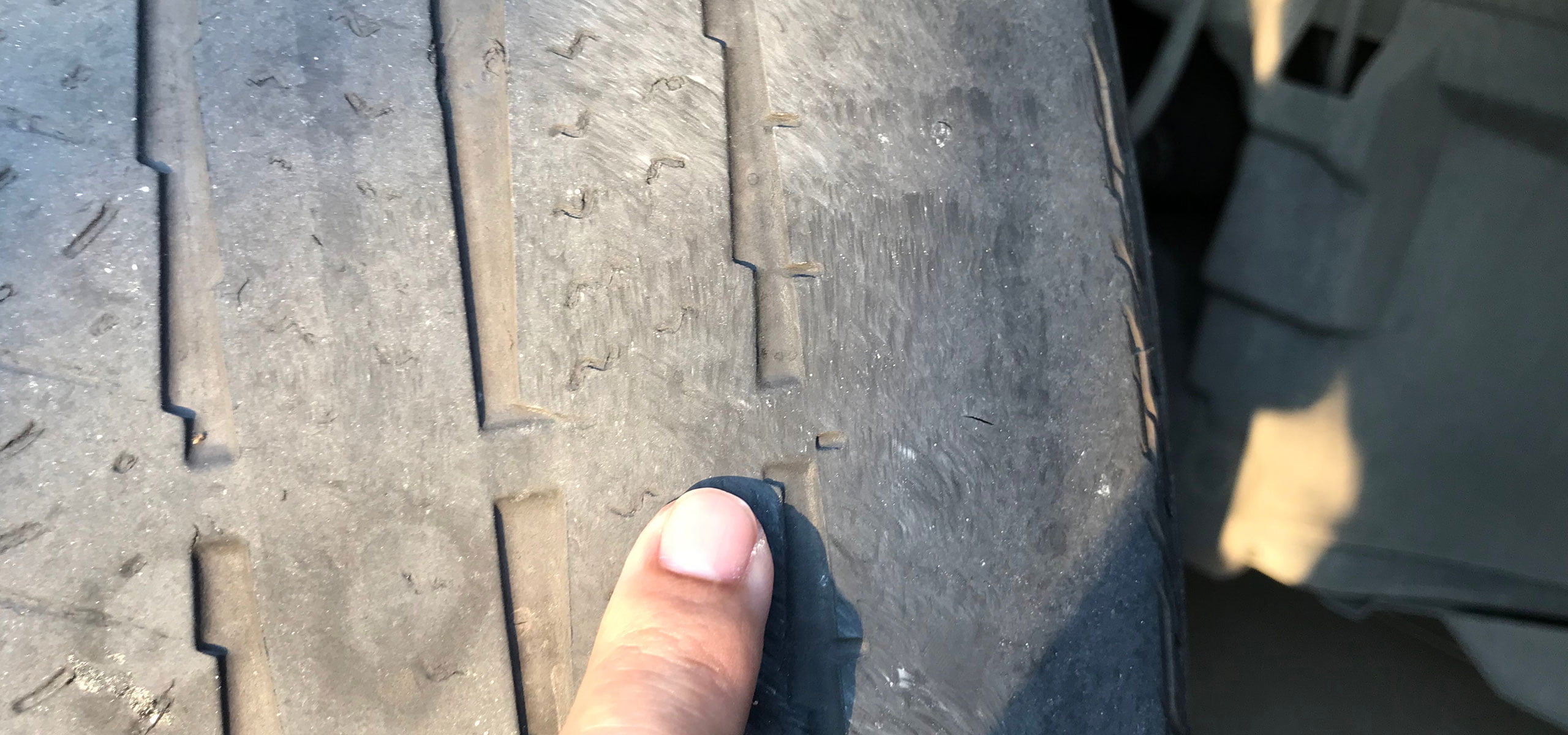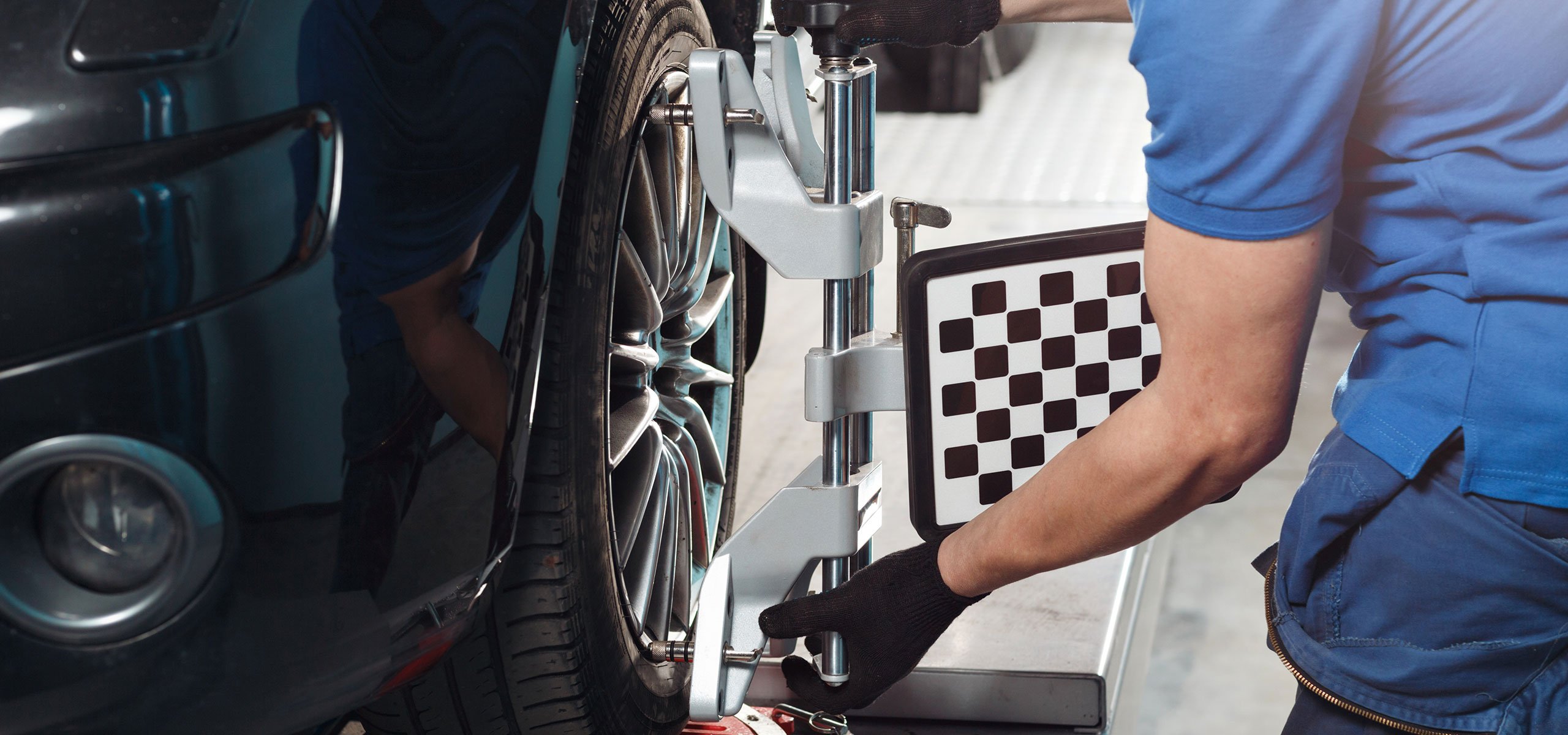
New Tyres: Do I Need A Wheel Alignment?
Understanding Wheel Alignment & Its Importance With New Tyres
When it comes to maintaining your vehicle’s health and ensuring a smooth, safe ride, wheel alignment plays a pivotal role. But what is wheel alignment, exactly? And why is it particularly important when you’ve just fitted new tyres to your vehicle?
Wheel alignment involves adjusting the vehicle’s suspension – the system that connects your vehicle to its wheels. It is crucial to note that alignment concerns the angles of the tyres and how they make contact with the road, rather than any direct adjustments to the tyres or wheels themselves. Proper alignment ensures that your tyres meet the road at the correct angle, your wheels are pointing straight and your tyres are centred in the wheel wells. Achieving this alignment is essential for optimal driving performance, ensuring that the vehicle handles as intended while also maximizing the lifespan of your tyres.
The significance of wheel alignment extends beyond mere handling; it directly influences tyre wear, fuel efficiency, and driver safety. Misaligned wheels can lead to rapid and uneven tyre wear, reduced fuel economy and a less comfortable driving experience. This issue becomes even more critical with new tyres. Fresh tyres represent a significant investment and play a crucial role in your vehicle’s performance and safety. Ensuring they are correctly aligned from the beginning can help prevent a range of problems, from premature wear to suboptimal handling and safety concerns.
As you equip your vehicle with new tyres, understanding the interplay between them and wheel alignment is essential. Let’s explore the intricate relationship between wheel alignment and new tyres, equipping you with insights to ensure your tyres deliver peak safety, efficiency and durability. Delving into the essentials of wheel alignment, we’ll uncover how it can elevate your driving experience, especially when new tyres come into play.

Camber, Castor and Toe:
Understanding the basics of wheel alignment is essential for any car owner, especially when you’re rolling out on new tyres. Three main alignment angles play pivotal roles in your vehicle’s overall alignment: camber, caster and toe. These angles contribute to the vehicle’s safety, tyre wear and how it handles on the road. Let’s break them down, particularly focusing on their importance when fitting new tyres:
Camber:
This is the inward or outward angle of the tyre when viewed from the front of the vehicle. Too much inward or outward tilt, known as negative or positive camber, respectively, indicates improper alignment and can cause uneven tyre wear and affect your car’s handling. With new tyres, ensuring the correct camber angle is crucial to avoid premature wear.
Caster:
Caster is the angle of your wheel’s pivot point, which is attached to the suspension, and is viewed from the side of the vehicle. This angle determines your vehicle’s steering axis. A positive caster will help your vehicle remain stable at high speeds, improve steering handling, and help your tyres maintain good contact with the road. Proper caster balance is essential when you’ve got new tyres to ensure you get the smoothest ride and even tyre wear.
Toe:
Imagine looking down at your feet and angling them inward or outward; that’s what toe alignment looks like on your car. It’s the extent to which your tyres turn inward or outward when viewed from above. Incorrect toe alignment can lead to “feathering” where tyres wear in a diagonal pattern. After getting new tyres, checking the toe alignment is crucial to avoid this uneven wear and extend the life of the tyres.
In essence, when you fit new tyres to your vehicle, paying attention to these alignment angles ensures that you’re setting up your new investment for the longest possible life and the best performance on the road. Proper wheel alignment is a cornerstone of vehicle safety and efficiency, and with new tyres, it’s your best bet for keeping things smooth and economical.

Why Alignment Matters with New Tyres
When you’ve just fitted your vehicle with new tyres, ensuring they are aligned correctly is more important than ever. But why does this alignment matter so much as soon as you’ve got fresh rubber on the wheels?
Firstly, alignment plays a critical role in tyre longevity and performance. Misaligned wheels can lead to rapid and uneven tyre wear, meaning those new tyres you’ve just installed could wear out much faster than they should. This isn’t just bad for your wallet; it’s also a safety risk. Uneven wear can reduce the grip your tyres have on the road, especially in wet conditions, making your vehicle less safe to drive.
Moreover, proper alignment ensures that your new tyres are performing to their full potential. Misalignment can lead to handling issues, such as pulling to one side, which not only makes for an uncomfortable driving experience but also puts additional stress on your vehicle’s suspension components. By ensuring your wheels are correctly aligned when you get new tyres, you’re making sure that your car handles as it should, providing a smoother, safer ride.
When To Consider Wheel Alignment with New Tyres
So, when should you consider getting your wheels aligned in relation to new tyre installation? Here are some guidelines to follow:
Immediate Alignment: Ideally, you should get a wheel alignment as soon as you install new tyres. This is the best way to ensure that your new tyres start their life on your vehicle under the best possible conditions. An immediate alignment helps protect your investment from the get-go, ensuring that your tyres wear evenly from the beginning.
After Significant Repairs: If you’ve had significant suspension or steering repairs, aligning your wheels is a must—especially if you’re also getting new tyres. This ensures that any changes to your vehicle’s suspension geometry are accounted for and that your new tyres don’t suffer from the aftermath of past issues.
Following Impact or Damage: If you’ve hit a significant pothole, curb, or debris in the road, it’s wise to check your alignment, especially if you’re about to replace your tyres. Impact can throw your vehicle’s alignment off, leading to uneven wear on new tyres if not addressed.
Scheduled Maintenance: Even if none of the above scenarios apply, it’s a good practice to have your alignment checked at regular intervals, such as every two years or with every other tyre rotation. This ensures that any gradual shifts in alignment are corrected before they can cause significant tyre wear.
In summary, aligning your wheels in conjunction with installing new tyres is crucial for ensuring the longevity and performance of your tyres. It’s an essential step in tyre maintenance that can save you money and keep you safe on the road. By following these guidelines, you can help ensure that your new tyres provide the best performance, safety, and value.
Identifying Alignment Needs
Signs Your New Tyres Require Alignment

Once you’ve got those new tyres installed, keeping an eye out for signs of misalignment can save you from a world of hassle and ensure that your tyres live their fullest life. Here are some tell-tale signs that your new tyres might be crying out for a proper alignment:
Uneven or Rapid Tyre Wear: If you notice that your new tyres are wearing down unevenly or faster than expected, this could be a clear indicator of alignment issues. Uneven wear can manifest as bald spots, feathering, or noticeable wear on one side of the tyre more than the other.
Steering Issues: If your vehicle pulls to one side or the other while you’re driving straight, or if the steering wheel is off-centre when driving straight, these are strong indicators that your alignment is off.
Vibration: Feel a constant vibration in the steering wheel? This could be due to misaligned tyres causing an imbalance in the way your car handles the road.
Handling Difficulties: If your car suddenly feels less responsive, or if it seems to wander or drift on a straight road, your alignment could be to blame.
Self-Check Techniques:
While professional alignment checks are recommended, there are a few simple techniques you can employ to get an initial sense of your vehicle’s alignment status:
The Straight Line Test: Find a flat, straight,and traffic-free road. Briefly take your hands off the steering wheel (ensure it’s safe to do so) and observe if the car maintains a straight path or veers to one side. Veering could indicate an alignment problem.
Check Your Tyre Pressure: Before diagnosing alignment issues, ensure that all your tyres are inflated to the manufacturer’s recommended levels. Uneven tyre pressure can lead to false alarms regarding alignment issues.
Visual Inspection: Take a look at your tyres. Are there signs of uneven wear? Remember, while some signs can be subtle, any noticeable difference in wear between the left and right sides of your vehicle can be a symptom of misalignment.
Steering Wheel Check: While driving, check if the steering wheel is cantered and straight. If you have to keep your steering wheel at an angle to drive straight, your car likely needs an alignment.
Remember, these self-checks can indicate potential alignment issues, but a professional assessment is necessary to confirm the state of your vehicle’s alignment accurately. Regular checks and maintenance can extend the life of your new tyres, improve your vehicle’s safety and enhance your driving experience. If in doubt, it’s always best to consult with a professional to ensure your new tyres and alignment are in perfect harmony.
Professional Alignment Insights

The Wheel Alignment Process
When you bring your vehicle in for a wheel alignment, especially after installing new tyres, the process involves several key steps to ensure that your car’s suspension settings are optimised. Here’s what typically happens:
Pre-Alignment Check: This initial stage involves checking the tyre pressure and inspecting the suspension and steering components for wear or damage. This is crucial as underlying issues could affect the tyres and alignment accuracy.
Measurement and Assessment: Using advanced computerized equipment, the technician will measure your vehicle’s current alignment settings. This includes checking the camber, caster and toe angles against the manufacturer’s specifications, particularly important for new tyres to ensure they wear evenly and perform as intended.
Adjustment: Based on the measurements, the technician will then adjust these angles to ensure proper alignment. This may involve adjusting the position of the wheels and suspension components to achieve the optimal alignment setting that complements your new tyres.
Test Drive and Recheck: After the adjustments, a test drive is usually conducted to ensure that the vehicle drives straight and the steering wheel is centred. The vehicle may be rechecked to confirm that the alignment settings are within specification.
Benefits of Aligning New Tyres
Aligning new tyres is not just a recommended practice; it’s a critical investment in your vehicle’s performance and your safety. Here are the detailed benefits:
Extended Tyre Life: Proper alignment eliminates uneven tyre wear, meaning your new tyres will last longer, saving you money and hassle in the long run.
Improved Fuel Efficiency: Misaligned tyres can create more road resistance, which means your vehicle burns more fuel. Aligning new tyres ensures they meet the road correctly, reducing resistance and improving your vehicle’s fuel efficiency.
Enhanced Safety: Proper wheel alignment contributes to more predictable vehicle control, which can be crucial in avoiding accidents. Correctly aligned tyres provide better contact with the road, improving handling and decreasing the stopping distance.
Smoother Ride: Misalignment can lead to a rough, uncomfortable ride due to vibration and vehicle pulling. Once aligned, your car will drive smoother, making your driving experience much more pleasant and reducing strain on the vehicle’s suspension components.
Cost Savings: While there is an upfront cost to wheel alignment, the long-term savings are significant. By extending the life of your tyres, improving fuel efficiency, and avoiding potential suspension repairs caused by uneven tyre wear, you’ll save money on future vehicle maintenance.
In conclusion, aligning your new tyres is a critical step in ensuring that your vehicle remains safe, efficient and cost-effective. Regular alignment checks, especially following the installation of new tyres, can significantly contribute to your vehicle’s longevity and performance.
When Is Wheel Alignment Critical?

In certain scenarios, ensuring your vehicle is properly aligned becomes even more critical, particularly after fitting new tyres:
Performance Vehicles: For cars designed for high speeds or precise handling, correct alignment is crucial. Misalignment can significantly affect performance, handling and tyre wear. Performance vehicles often require more precise alignment settings to take full advantage of their design and new tyres.
Heavy Usage: Vehicles that carry heavy loads or are driven extensively, such as commercial vehicles or long-distance commuters, will particularly benefit from regular alignment checks. The added weight and distance can exacerbate alignment issues, leading to faster tyre wear and reduced performance.
After Suspension or Steering Repairs: If you’ve recently had work done on your vehicle’s suspension or steering, an alignment check is essential. Even minor adjustments can affect your vehicle’s alignment and by extension, the wear and performance of new tyres.
Following an Impact: If your vehicle has hit a pothole, curb, or been in an accident, it’s wise to get the alignment checked. Such impacts can knock your vehicle’s suspension out of alignment, leading to rapid tyre wear and other handling issues.
In each of these cases, understanding the importance of wheel alignment—especially with new tyres—can save you from future expenses and ensure your vehicle performs optimally. Regular checks and maintenance are key, particularly in scenarios that put additional stress on your vehicle.
Maintenance and Prevention

Maintaining Alignment Post New Tyres
Once your vehicle has been fitted with new tyres and aligned, it’s important to maintain that alignment to ensure the longevity and performance of the tyres. Here are some tips:
Regular Checks: Make wheel alignment checks a part of your regular vehicle maintenance routine. It’s recommended to have an alignment check every 10,000 km or at least once a year and after any significant impacts or changes to your vehicle’s suspension.
Tyre Pressure: Keep your tyres properly inflated according to the manufacturer’s specifications. Incorrect tyre pressure can lead to uneven tyre wear and can throw off your vehicle’s alignment over time.
Drive Carefully: Avoid hitting potholes, curbs and other road hazards whenever possible. These impacts can jolt your vehicle’s suspension system and knock your wheels out of alignment.
Load Distribution: Be mindful of how you load your vehicle. Heavy loads, especially if unevenly distributed, can affect alignment and tyre wear. Try to distribute weight evenly and avoid overloading your vehicle.
Preventing Misalignment
To extend the life of your new tyres and ensure they perform optimally, consider these preventative practices:
Routine Inspections: Regularly inspect your tyres for signs of uneven wear and have your vehicle’s suspension and steering systems checked for any worn or damaged parts. Addressing these issues promptly can prevent them from leading to misalignment.
Balancing and Rotation: Have your tyres balanced and rotated according to the manufacturer’s recommendations. This can help prevent uneven wear patterns from developing on your tyres, which can contribute to alignment issues.
Driving Habits: Be conscious of your driving habits. Aggressive driving, such as hard braking, fast cornering and rapid acceleration, can put additional stress on your vehicle’s alignment. Adopting a smoother driving style can help maintain your vehicle’s alignment and tyre condition.
Proper Installation: Ensure that your new tyres are installed by a professional who can also check for any alignment issues. A proper installation includes balancing and fitting the tyres correctly, which can help maintain the alignment.
By following these maintenance and prevention tips, you can help ensure that your vehicle remains properly aligned, thereby extending the life of your new tyres and maintaining optimal driving performance. Regular maintenance not only saves you from future costs associated with tyre replacement and additional repairs but also ensures your safety on the road.
The Verdict on New Tyres and Wheel Alignment

“Do I need a wheel alignment with new tyres?” The answer is a resounding YES. Ensuring your vehicle undergoes a proper wheel alignment when installing new tyres is not just beneficial—it’s essential for maintaining the health and performance of your vehicle. Wheel alignment plays a critical role in ensuring that new tyres deliver the safest, most efficient and longest-lasting performance. Proper alignment is not merely a recommendation; it is a cornerstone of tyre maintenance that directly influences longevity, vehicle safety and fuel efficiency.
Understanding the signs of misalignment is crucial. It allows for timely intervention that can significantly enhance the driving experience. The intricacies of wheel alignment involve key angles – camber, caster and toe. These angles are pivotal in determining how a vehicle responds to new tyres. Special attention to alignment becomes even more imperative when installing new tyres, post-impact recovery, or under driving conditions that exert extra demand on the vehicle’s suspension system.
Preventing misalignment can help immensely. Preventative measures are not only about preserving tyre life but also about maintaining the vehicle’s overall performance. By committing to routine checks and careful driving, any potential issues can be addressed promptly, thus safeguarding the investment in new tyres.
When you get new tyres, wheel alignment is an indispensable aspect of vehicle maintenance. It stands as a critical step that should not be omitted, as it bears direct relevance to the safety, efficiency and cost-effectiveness of the driving experience. So, when you ask whether you need a wheel alignment with new tyres, let there be no doubt—yes, you absolutely do.
Auto Stop are professionals in wheel alignments and we have a service in both Brisbane and Gold Coast. Contact us for any wheel alignment or new tyre wheel alignment enquiries you may have, we’re here to help.


